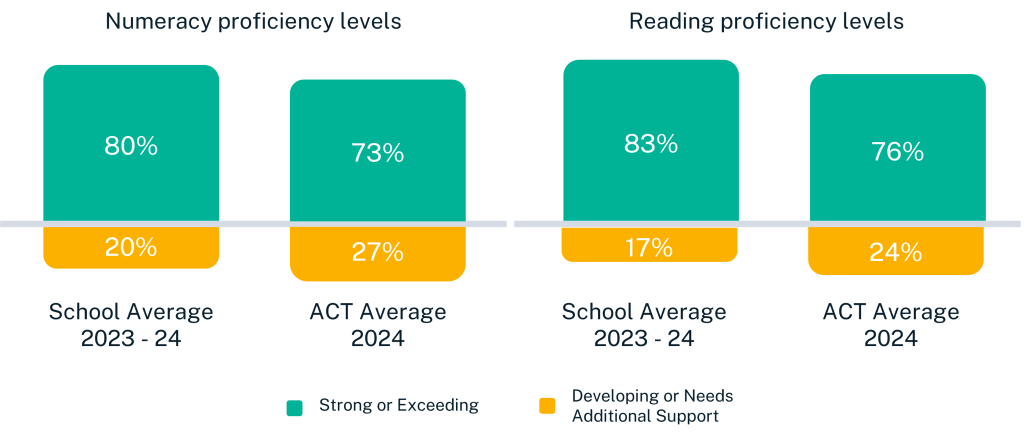As a large primary school, Good Shepherd Primary School, Amaroo has worked hard to get everyone on the same page and working as one to improve student learning

Amaroo, ACT

767 Students

37 Teachers
Good Shepherd Primary School serves students from diverse and multicultural backgrounds in Canberra. The school has transitioned from an inquiry-based approach to teaching to Catalyst’s focus on Direct Instruction and Explicit Instruction, and staff are seeing strong results from the change.
At Good Shepherd, Catalyst supports equity in learning
Prior to Catalyst, Good Shepherd adopted a student-led approach where children where taught with an inquiry-based model. Current research suggests that students benefit most from this approach when they have existing content knowledge to draw on. For this reason, Catalyst focuses on a ‘knowledge-rich curriculum’ and ensuring every student is explicitly taught the skills they need.
“We can now see that every student is getting the same thing, and one class isn’t missing out on, for example vocabulary or text level writing.” (Classroom teacher)
The Catalyst approach now taken at Good Shepherd is about giving every student the same opportunity to succeed. A strong message from leadership about equity resonates with teachers, who recognise the importance of this – not just at their school – but for every child in the system.
“The biggest conversation I would have with those new teachers is about equity.“ (School leader)
Teachers work in teams to bring this approach to life. Weekly two-hour meetings are the key mechanism for consistency, with all staff in a given year level planning together to ensure they are delivering the same content. Teachers know when and how to adapt the shared plan, when needed, to best support the children in their particular class.
The new Principal identifies the importance of student assessment
While the school has undergone a leadership change in 2024, the new Principal has maintained a strong focus on Catalyst. Data use across schools is unlocking new possibilities for teaching, and Good Shepherd is keen to be at the forefront.
The Principal identifies, “We’re really evolving a new language around assessment at the school”.
The approach to data use and assessment spans both sophisticated adaptive and diagnostic testing, to systematically using miniature whiteboards with students in classrooms. The latter is a Catalyst strategy that gives teachers instant feedback on how well all students are grasping what is being taught. It means teachers get the information they need, without students constantly doing tests.
“The biggest change is using data to inform our teaching practices. We’re collecting data more consistently. And just even the use of whiteboards we collect more data rather than relying only on formal assessments…And trusting that that is actually a good way of informing our teaching practices.”
(Classroom teacher)
Teachers are motivated by the results they are seeing students achieve
Ask any teacher at Good Shepherd about the impact of Catalyst, and they will tell you what they are seeing in their classroom, and how this motivates them to keep getting better and better.
“The results are really what’s driving us, that we can actually see these programs are working… We can see our little people are growing.”
(Classroom teacher)
Good Shepherd NAPLAN results – Year 3 and 5 combined
This improvement, and the way the school supports all students can also be observed in NAPLAN.

Empowering students to take the next step in their learning
In reflecting on the next steps for the school in 2025, there is a strong emphasis on how students can feel that they ‘own’ their assessment data (in an age-appropriate way). This aligns with research about the importance of student agency, motivation and wellbeing, and the types of feedback that best help students learn. In practice, this might look like conversations with students after tasks to help them understand the specific next step for them in their learning.
External Analysis delivered by

To measure the outcomes and impact of the Catalyst program, CECG engaged Deloitte Access Economics (DAE) for an external analysis. Starting in January 2022, DAE evaluated Catalyst’s effectiveness on schools. Their final report includes six case studies from diverse schools in the Archdiocese, highlighting academic achievements for students and advocacy impacts for teachers, along with areas for improvement.


